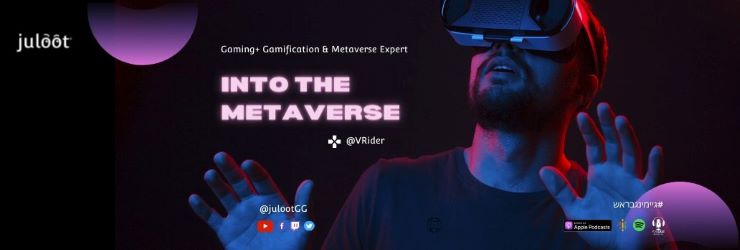Massively Multiplayer On-line Games (MMOGs), social networked, and three-dimensional virtual worlds (3D), are merging to form the Web3D. The Association of Virtual Worlds recently published a guide which contains over 250 3D virtual worlds operating or currently under development (AVW, 2008), and Forrester Research recent forecast stated that "Web3D will evolve during the next five to seven years from an immature emerging market to a standards-based, interoperable global environment", urging its clients to start experimenting with Web3D despite the infancy of the medium (Driver et al., 2008). My presentation will focus on the Web3D potential for higher education.
The Academia is catching up with the current trend of the industry, as major high tech companies such as IBM, Intel and Sun Micro Systems, to name a few, are developing programs in SL (Gronstedt, 2007). Over 200 colleges and universities around the world are exploring the educational potential of SL (Kelton, 2007). For example, Harvard Law School's CyberOne uses SL for collaborative public law learning (Nesson & Nesson, to appear), while Dubai's Women College uses SL for teaching healthcare and virtual commerce, as well as for cultural exchanges with other academic institutes. Moreover, digital games and virtual worlds can serve as a cognitive bridge between concrete experiences and scientific concepts, enabling students to cope with complex problem solving and high level thinking skills (Dede et al., 2005; Gazit, 2008). Likewise, de Freitas (2006) argued that game-based learning may provide new opportunities for reassessing how people learn and for supporting the development of new immersive spaces, where learners may produce their own materials, share learning experiences and practice skills of the real-world. However, at the same time de Freitas (2006) pointed out the need for conducting empirical studies on game based learning and their potential use in education.
Is it just an illusion?
A careful examination of the Web3D's is needed when considering its use for higher education. First, only a small number of administrators and instructors are experienced in virtual worlds and many others might doubt their academic relevance (Graetz, 2006). Second, setting up a Web3D entity, such as a SL Island, is very time-consuming. Hence, the possibility should be examined to see if the learning outcome can be achieved by using 2D regular websites or alternative 2.O platforms. Third, manipulating 3D objects and orienting in a 3D world can be difficult and frustrating (Gazit et al., 2006; Burigat , a,
, a,  and & Chittaro, 2007). Moreover, current technical problems and rendering issues, system sluggishness, and crashes that should be taken into account. Berge (2008) argues that "until educators figure out what to do in 3D virtual environments that cannot be more easily done in real life…educators in these virtual metaverses are relying on novelty and social presence to carry the day" (ibid, p. 30-31).
and & Chittaro, 2007). Moreover, current technical problems and rendering issues, system sluggishness, and crashes that should be taken into account. Berge (2008) argues that "until educators figure out what to do in 3D virtual environments that cannot be more easily done in real life…educators in these virtual metaverses are relying on novelty and social presence to carry the day" (ibid, p. 30-31).
The question of whether the Web3D has a real educational value or is it just an illusion is waiting to unfold, but there is no doubt about the need for a coherent conceptual framework for studying its advantages and limitations.
References
Association of Virtual Worlds. (2008). The Blue Book A Consumer Guide to Virtual Worlds. 2d Edition. Available On line:http://www.associationofvirtualworlds.com/publishing_blue_book.htm
(Retrieved May 14, 2008)
Berge, Z. L. (2008). Multi-User Virtual Environments for Education and Training? A Critical Review of Second Life, Educational Technology, 27-31. Available On line: http://it.coe.uga.edu/itforum/ETSecLife.pdf
(Retrieved May 14, 2008)
Burigat, S., & Chittaro, L. (2007). Navigation in 3D virtual environments: Effects of user experience and location-pointing navigation aids, International Journal of Human-Computer Studies, 65 (11), 945-958.
De Freitas , S. (2006). Learning in Immersive Worlds: a review of game based Learning. JISC Review report. Available On line: http://www.jisc.ac.uk/eli_outcomes.html (Retrieved May 10, 2008)
Dede, C., Clarke, J., Ketelhut, D. J., Nelson, B., & Bowman, C. (2005). Students’ motivation and learning of Science in a Multi-User Virtual Environment. Presented at the American Educational Research Association Annual Meeting (AERA), (April 2005), (pp.11-15), Montreal, Canada.
Driver, E., Moore, C., Jackson, P., Keitt, T.J., & Schooley, C. (2008). Web3D: The Next Major Internet Wave. Available On line: http://www.forrester.com/Research/Document/Excerpt/0,7211,45257,00.html (Retrieved April 15, 2008)
Gazit, E. (2008). A window on digital games interactions in home settings. In: Ferdig, R. E (Ed.) Handbook of Research on Effective Electronic Gaming in Education, (Vol 1, pp.127-145). IGI Global Press.
Gazit, E., Yair, Y., & Chen, D. (2006). The gain and pain in taking the pilot seat: Learning dynamics in a non immersive virtual solar system, Virtual Reality, 10 (3-4), 271-282.
Graetz, K. A. (2006).The psychology of learning environments. EDUCAUSE Review, 41 (6), 60–75. Available On line: http://www.educause.edu/ir/library/pdf/erm0663.pdf
(Retrieved May 12, 2008)
Gronstedt, A. (2007). Second Life produces real training results. T & D Magazine, 44–49. Available On line: http://www.learningcircuits.org/2007/0807gronstedt.html
(Retrieved May 10, 2008)
Kelton, A. J.(2007).Second Life: Reaching into the virtual world for real-world learning. ECAR Research Bulletin, 17. Available On line:http://www.educause.edu/ir/librar y/pdf/ecarso/erb/ERB0717.pdf
(Retrieved April 12, 2008)
Nesson, R., & Nesson, C. (to appear). In the Virtual Classroom: An Ethnographic Argument for Education in Virtual Worlds. Space and Culture. Sage Publications. 2008. Available On line: http://www.eecs.harvard.edu/~shieber/Biblio/Papers/Nesson-2006-IPS.pdf (Retrieved May 10, 2008)
About The 6th Annual MEITAL National Conference 





